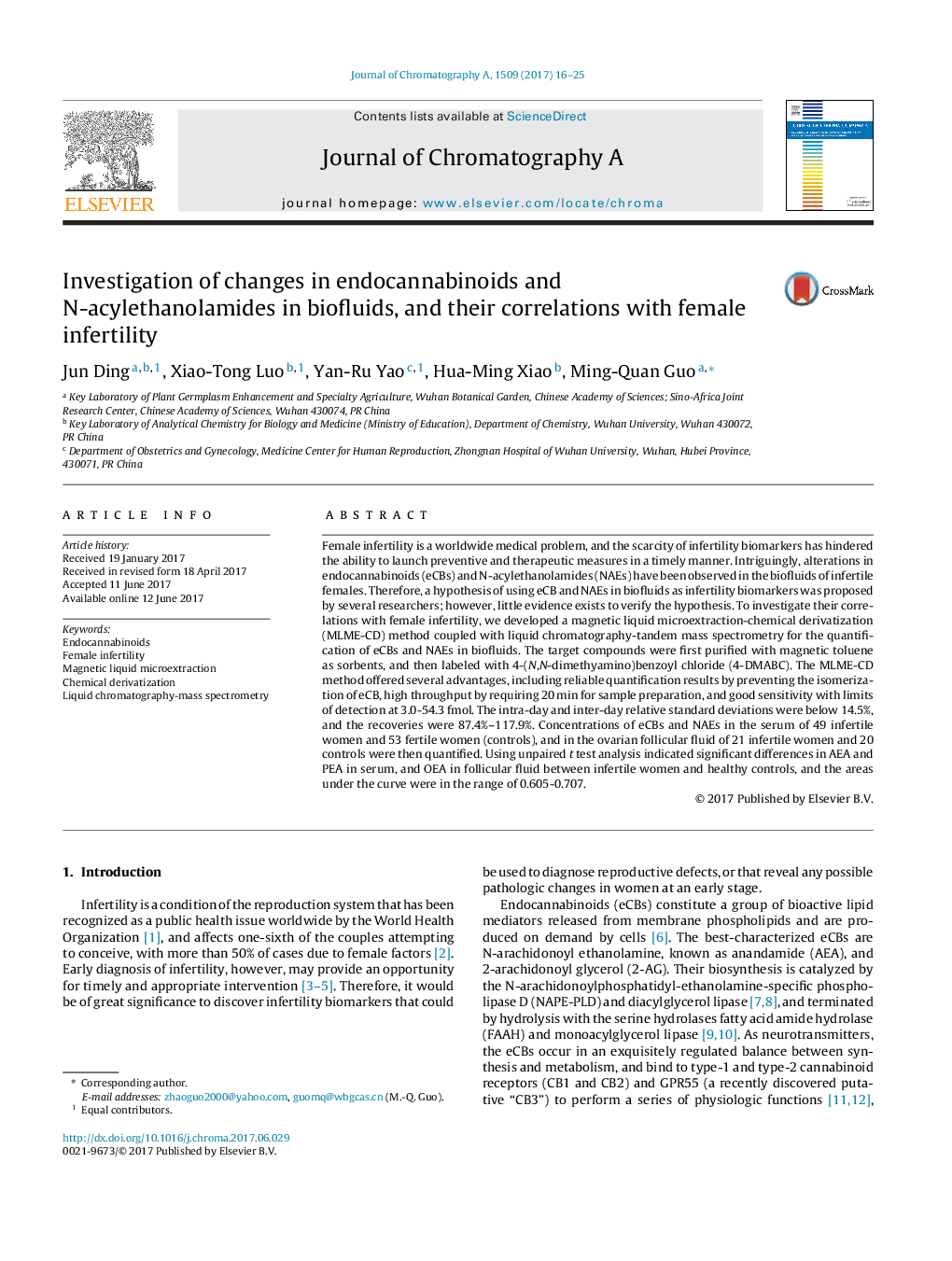| Article ID | Journal | Published Year | Pages | File Type |
|---|---|---|---|---|
| 5135015 | Journal of Chromatography A | 2017 | 10 Pages |
â¢Magnetic liquid microextraction using toluene as extractant was employed for eCBs and NAEs enrichment.â¢MS sensitivities of eCBs and NAEs were improved by 4-(N,N-dimethyamino)benzoyl chloride labeling.â¢Isomerization of 2-AG was prevented by the method.â¢ECBs and NAEs contents in the biofluids from 143 patients and healthy controls were investigated.â¢The correlation of eCBs and NAEs with female infertility was discussed.
Female infertility is a worldwide medical problem, and the scarcity of infertility biomarkers has hindered the ability to launch preventive and therapeutic measures in a timely manner. Intriguingly, alterations in endocannabinoids (eCBs) and N-acylethanolamides (NAEs) have been observed in the biofluids of infertile females. Therefore, a hypothesis of using eCB and NAEs in biofluids as infertility biomarkers was proposed by several researchers; however, little evidence exists to verify the hypothesis. To investigate their correlations with female infertility, we developed a magnetic liquid microextraction-chemical derivatization (MLME-CD) method coupled with liquid chromatography-tandem mass spectrometry for the quantification of eCBs and NAEs in biofluids. The target compounds were first purified with magnetic toluene as sorbents, and then labeled with 4-(N,N-dimethyamino)benzoyl chloride (4-DMABC). The MLME-CD method offered several advantages, including reliable quantification results by preventing the isomerization of eCB, high throughput by requiring 20Â min for sample preparation, and good sensitivity with limits of detection at 3.0-54.3 fmol. The intra-day and inter-day relative standard deviations were below 14.5%, and the recoveries were 87.4%-117.9%. Concentrations of eCBs and NAEs in the serum of 49 infertile women and 53 fertile women (controls), and in the ovarian follicular fluid of 21 infertile women and 20 controls were then quantified. Using unpaired t test analysis indicated significant differences in AEA and PEA in serum, and OEA in follicular fluid between infertile women and healthy controls, and the areas under the curve were in the range of 0.605-0.707.
